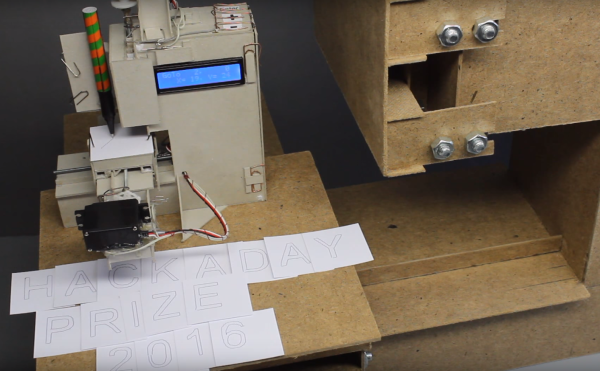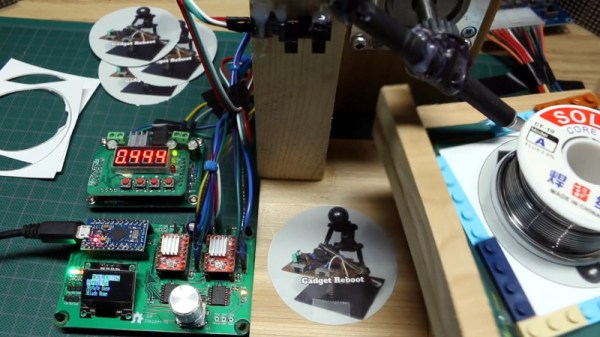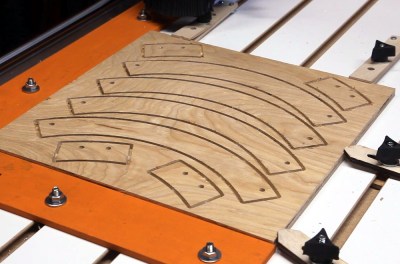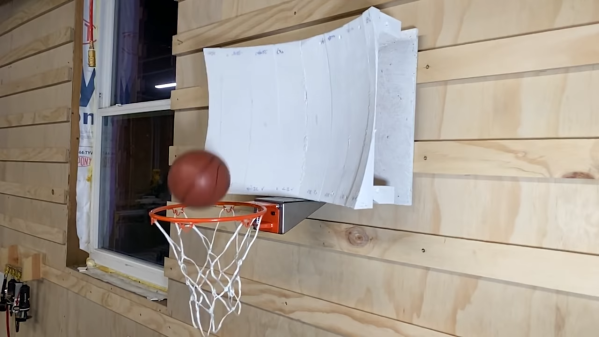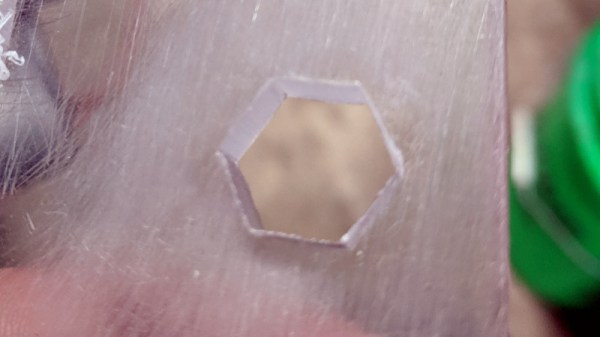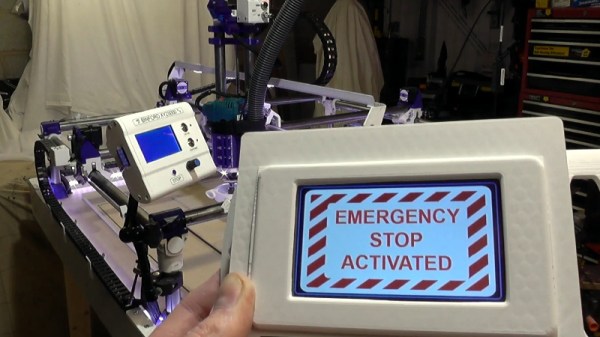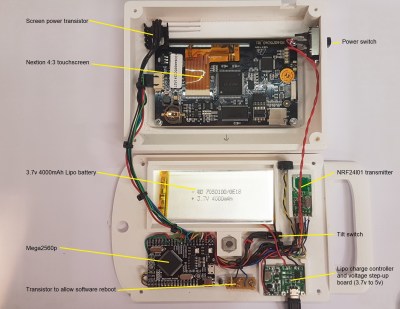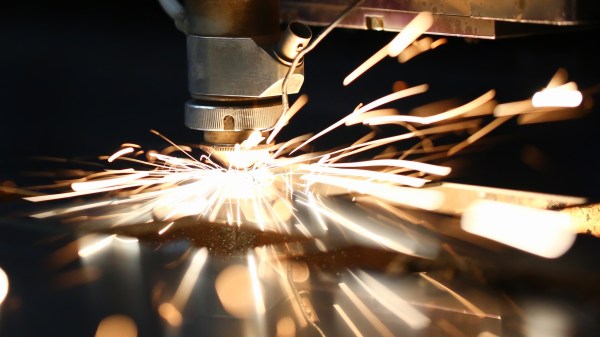Some of the coolest hacks do a lot with a little. I was just re-watching a video from [Homo Faciens], who after building a surprisingly capable CNC machine out of junk-bin parts and a ton of ingenuity, was accidentally challenged by Hackaday’s own [Dan Maloney] to take it a step further. [Dan] was only joking when he asked “Can anyone build a CNC machine out of cardboard and paperclips?”, but then [Homo Faciens] replied: cardboard and paperclip CNC plotter. Bam!
My favorite part of the cardboard project is not just the clever “encoder wheel” made of a bolt dipped in epoxy, with enough scraped off that it contacts a paperclip once per rotation. Nor was it the fairly sophisticated adjustable slides and ways that he built to mimic the functionality of the real deal. Nope.
My favorite part of this project is [Norbert] explaining that the machine has backlash here, and it’s got play there, due to frame flex. It is a positive feature of the machine. The same flaws that a full-metal machine would have are all present here, but due to the cheesy construction materials, you can see them with the naked eye instead of requiring a dial indicator. Because it wiggles visible tenths of an inch where a professional mill would wiggle invisible thousandths, that helps you build up intuition for the system.
This device isn’t a “prototype” because there’s no way [Norbert] intends it for serious use. But it surely isn’t just a “toy” either. “Instructional model” makes it sound like a teaching aid, created by a know-it-all master, intended to be consumed by students. If anything, there’s a real sense of exploration, improvisation, and straight-up hacking in this project. I’m sure [Norbert] learned as much from the challenge as we did from watching him tackle it. And it also captures the essence of hacking: doing something unexpected with tech.

